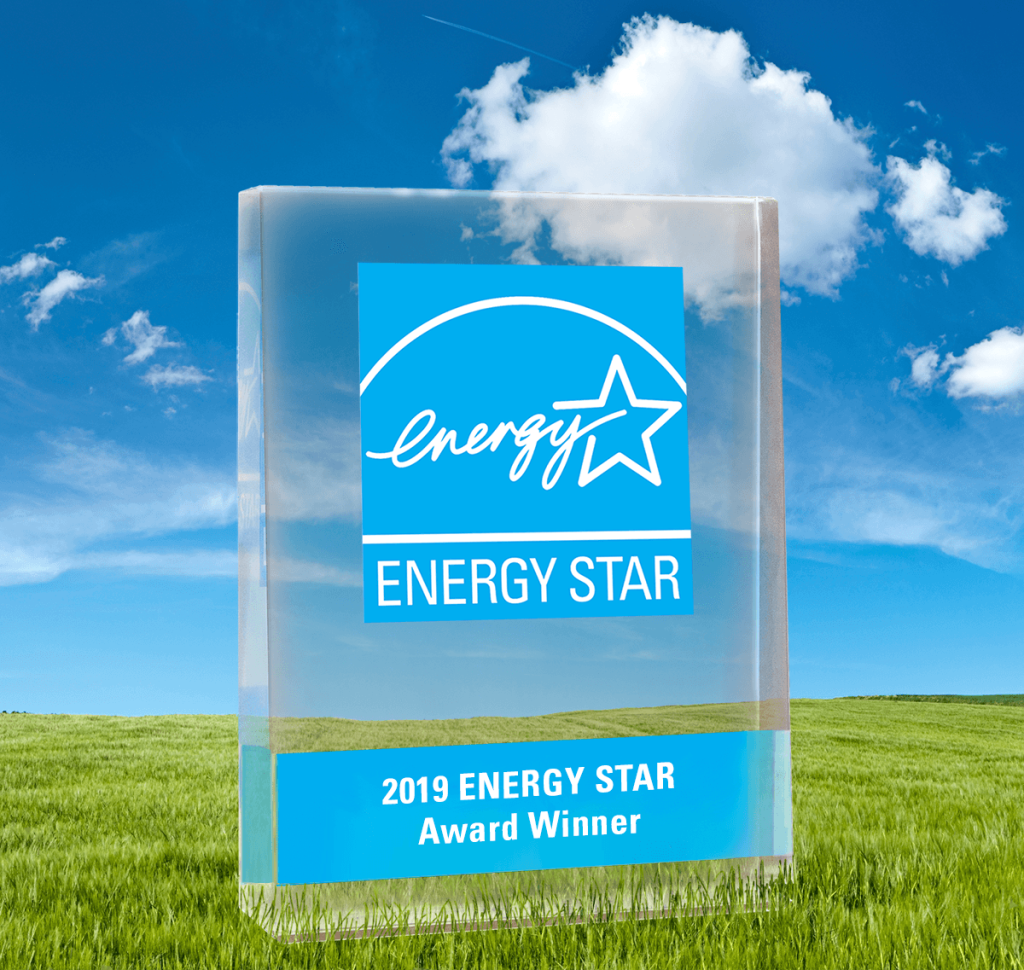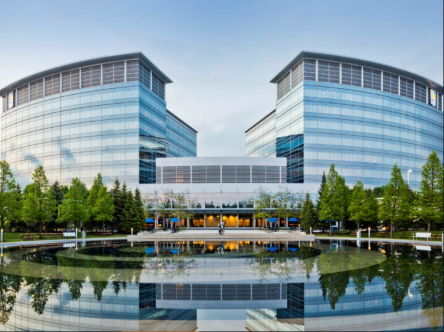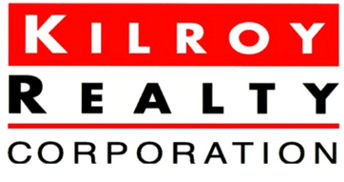Yardi Energy Solutions is positioned to support U.S. Environmental Protection Agency initiatives in energy data aggregation, access and reporting. The agency’s new Whole-Building Energy Data Campaign, for example, is designed to help building owners appeal to utilities for access to accurate whole building data for multitenant buildings. Whole building data enables visibility into energy consumption, helping owners and managers create a roadmap for instituting ongoing operational improvements. EPA has also added data from 2022 to the ENERGY STAR Portfolio Manager Data Explorer, an interactive tool that displays performance trends of buildings benchmarked in ENERGY STAR® Portfolio Manager®. And what is Yardi Energy Solutions’ contribution? The suite of energy management solutions simplifies the collection and transfer of data to ENERGY STAR Portfolio Manager, the most widely used system in North America for compliance reporting. It also tracks building performance standards derived from ENERGY STAR data as they are developed and help clients understand and meet the associated new reporting challenges. Automation of these operations relieves building owners and managers of a difficult, time-consuming process while helping them remain compliant with any number of local and state reporting regulations. Zero building emissions standard On another front, EPA collaborated with the U.S. Department of Energy to finalize the national definition of a zero emissions building. Such a building is highly energy efficient, does not emit greenhouse gases directly from energy use and is powered solely by clean energy. According to EPA, the definition intends “to offer a standardized, consistent and measurable set of criteria for others to use in their programs and policies,” and may eventually expand beyond operational emissions to encompass embodied carbon and refrigerant management. The definition aligns closely with the criteria for EPA’s ENERGY STAR NextGen™, a certification scheduled for launch in late 2024 that will encompass superior energy performance, the use of renewable energy and means for meeting direct emissions targets. Here again, Yardi Energy Solutions can help “simplify the aggregation of whole building data collection and reporting for sustainability purposes. The first step is gathering data from multiple sources and identifying efficient and inefficient buildings,” says Joe Consolo, industry principal for Yardi Energy. Learn more about how Yardi energy management software and certified experts simplify collecting, assimilating and reporting required energy consumption...
ENERGY STAR Day
Celebrate energy savings
Tuesday, Oct. 22, 2019, is ENERGY STAR Day, described by the U.S. Environmental Protection Agency as “a celebration of energy efficiency” and a means to raise awareness of the benefits of favoring products and properties with ENERGY STAR® certification. And there’s a lot to celebrate. On average, ENERGY STAR-certified buildings use 35% less energy than typical buildings nationwide and command a premium of up to 16% for sales prices and rental rates. More than 34,000 buildings have earned certification, which requires an ENERGY STAR score of 75 or higher, meaning that such a building performs better than at least 75% of similar buildings nationwide. All told, ENERGY STAR and its partners have helped save American families and businesses more than $450 billion and over 3.5 trillion kilowatt-hours of electricity since 1992 while also achieving broad emissions reductions. Another facet of the ENERGY STAR program has been similarly fruitful for industrial plants, while ENERGY STAR-certified homes, apartments and products are built to an equally high standard of efficiency. Yardi is intimately familiar with ENERGY STAR and its benefits. Property managers use the Yardi Pulse Suite to capture energy data for ENERGY STAR® benchmarking and reporting. The company employs experts who can help clients identify conservation opportunities and comply with ENERGY STAR and other standards. Yardi is also sponsoring a series of webinars this month on new ENERGY STAR compliance requirements taking effect in the U.S. and Canada next year. The EPA, co-manager of ENERGY STAR, has recognized Yardi as an energy efficiency leader. In April 2019, the company earned designation as an ENERGY STAR Partner of the Year, the highest level of recognition the agency offers, in the service and product provider category. Check out the EPA’s toolkit for spreading awareness of ENERGY STAR Day through...
Climate Cleanup
New NYC Emissions Law
The Climate Mobilization Act is a package of legislation designed to drastically reduce carbon emissions from New York City’s commercial properties. It covers everything from closing high emitting power plants and installing renewable energy sources to limiting emissions from buildings of over 25,000 square feet. A major component of the proposal, Local Law 97 (formerly Bill 1253), was approved by the city council in April 2019 and focuses on greenhouse gas emissions limits for existing buildings. We asked Brian Fridkin, a Yardi Client Services Division team leader in Yardi Energy, for an analysis of LL 97. Q: How will this bill impact Yardi clients in New York City? Fridkin: Many clients who own or manage any commercial property of over 25,000 square feet will have to comply with the law’s carbon emission limits starting in 2024. That’s five years away, but they need to act now to meet the deadline. To comply, property owners will have to calculate their building’s carbon limit, which is based on the square footage of their building. They will then have to calculate their current emissions based on the emission coefficients set in the law. To avoid penalties, they will have to make reductions in the next five years that equal the difference between their emissions and limit. What’s more, the emission limits change every five years. The limits for 2030-2034, for example, are about half of those for 2024-2029. That’s good because property owners can ease into the changes, but they must constantly prepare for upcoming limits. Additionally, there are minimum requirements that a building must meet by 2024, which include adjusting temperature set points for heat and hot water, repairing system leaks, insulating pipes, ensuring steam traps are operating correctly, complying with lighting standards and weatherizing windows....
Standard of Excellence
Energy Star Awards
The U.S. Environmental Protection Agency’s designation of Yardi as a 2019 ENERGY STAR® Award recipient in the service and product provider category was previously announced in this space. The award recognizes the company’s outstanding contributions to protecting the environment through superior energy efficiency achievements. More than 180 organizations across a broad swath of industries joined Yardi in receiving ENERGY STAR awards in April. Some of their achievements that ENERGY STAR documented are summarized below. Along with saving more than 5.6 million kilowatt-hours from LED retrofit and solar programs, Chicago apartment community developer and manager AMLI Residential engaged its leasing staff to educate residents and prospective residents on the benefits of living in an ENERGY STAR-certified community. Boston Properties incorporated cost recovery for ENERGY STAR certification, sub-metering of high-intensity tenant equipment and tenant energy disclosure through ENERGY STAR Portfolio Manager® into its master lease form. The self-administered and self-managed real estate investment trust also achieved ENERGY STAR certification for 77 properties in 2018. Bozzuto Management Company of Greenbelt, Md., pursued 100% benchmarking in ENERGY STAR Portfolio Manager for all managed assets and achieved energy reductions of more than 3% and 2% in site and source energy usage, respectively, across its portfolio in 2017, which equates to a calculated energy cost savings of more than $4 million. The manager of more than 255 multifamily communities also communicates sustainability and ENERGY STAR issues through its internal Bozzuto in the Know program. CommonWealth Partners, a Los Angeles private real estate investment, development, management and operating company, developed an internal Battle of the Buildings Bootcamp competition that focused on empowering properties to reduce energy, water and waste over three months. The effort saved more than 12,000 megawatt-hours of energy, 16,000 kilogallons of water and more than 3,400 metric tons of carbon dioxide equivalent. Fairfax (Va.) County Public Schools, which serves more than 190,000 students, has saved more than $23 million since 2014 through a comprehensive energy program. The 10th largest school division in the U.S. also enacted student-conducted home energy audits, a Battle of the Buildings competition and extensive promotion of ENERGY STAR and energy efficiency through social media. Hudson Pacific Properties, a vertically integrated real estate company in Los Angeles, implemented an engagement and recognition program that recognized properties that achieved the largest ENERGY STAR score improvement, hosted the best tenant engagement event and demonstrated the largest reductions in energy, water and waste usage. Los Angeles-based Kilroy Realty Corporation received ENERGY STAR Charter Tenant recognition for one of its offices and promoted ENERGY STAR in an innovative TEDx talk. It also joined the BOMA W2 challenge, an initiative built with the support of a grant from Yardi, across 84 buildings. LBA Realty LLC achieved ENERGY STAR certification for 21 properties in 2018. The Irvine, Calif. office and industrial property manager and investor also increased its average ENERGY STAR score portfolio-wide from 78 to 81 and reduced its average weather-normalized source energy use intensity by over 5% from 2017-18. Memorial Hermann Health System of Houston saved more than 14 million kilowatt hours by retrofitting light fixtures. It also became the first healthcare system in Texas to utilize new ventilation rate standards that reduce energy use while still meeting air change rates set by the department of health. Principal Real Estate Investors LLC of Des Moines, Iowa, achieved more than 3% reduction in average weather-normalized source energy use intensity from 2017-18. The company has achieved more than $52 million in cumulative avoided energy costs and more than $137 million in potential increased asset value since 2008. Defense, civil government and cybersecurity solutions provider Raytheon Company designed and built an energy-efficient onsite data center that can be replicated at other sites, earning a top project award from its manufacturing peers. The Waltham, Mass.-based company also completed onsite battery storage projects at two facilities that help offset power consumption from the grid during peak periods. SL Green...
Utility Expenses
Savings for Seniors
Want to make your property more appealing to prospects? Keep their bills low. Senior living clients love to save money. Even more so, they love knowing that their housing provider is taking additional lengths to make saving money easier. By focusing on utility expenses, you’re creating value and enticing customers with cost savings. Cost savings on utilities aren’t traditionally sexy in advertising. It’s hard to make submeter installation look exciting. But money saved has proved to be appealing to seniors, especially when the savings are complemented with improved efficiency and high-quality services. Sustainability Matters Baby Boomers value sustainability. A 2018 High Tide Technologies survey of 2,000 adults discovered that Baby Boomers are more frugal than younger generations. Boomers consume less water and electricity. They’re also more likely to recycle, compost, and be food waste conscious. A separate study lead by Pew Research suggests that 36 percent of Boomers have molded lifestyles that protect the environment “at all times.” Only 12 percent of Gen Xers and Millennials report similar sentiments. The two bodies of research indicate that seniors are looking for more than fancy meal plans. They are seeking housing providers that are concerned about the welfare of their finances and the environment. So how do businesses deliver savings to residents? We sat down with Akshai Rao, vice president of energy and procurement at Yardi, to learn more. The Need for New Strategies While lowering overhead costs benefits businesses, that savings can be passed on to residents. Satisfied residents improve the bottom line, offering a win on two fronts for business owners. “Focusing on reducing consumption doesn’t just affect the bottom line, it may make you more desirable to potential residents,” says Rao. But a recent Argentum survey reveals that 49 percent of executives viewed...
Energy Upgrades
PM Expo Case Studies
The biggest annual industry event of its kind in Canada provided visibility for one of the key issues in property management. A session at the Property Management Exposition & Conference (PM Expo 2018) in Toronto featured case studies of building energy system upgrades from commercial real estate services provider Colliers International and Triovest Realty Advisors Inc. Martin Levkus, regional director for Yardi Energy, moderated the session. Phillip Raffi, national energy and sustainability manager for Colliers, a Yardi Energy client, discussed a recent update of a 665,000-square-foot mixed-use building in Toronto. The company leveraged utility incentive programs and rebates to offset the costs of retrofitting lighting, installing variable fan drives, redoing the exterior sealant to reduce heat loss through the building envelope, and replacing the building’s boiler with two smaller units. The project produced annual natural gas savings of $33,000, the company’s first BOMA Best Platinum certification in Canada and a 72% reduction in energy use intensity, the energy used per square foot per year. Colliers, which offers energy management planning for all of its properties, has targeted a 5% annual energy reduction for the building. Kit Milnes, national sustainability manager for Triovest Realty Advisors Inc., described enhancements to two properties in Mississauga and Edmonton, Canada, as “the right tools that spark the right actions.” Upgrades included real-time metering and submetering, lighting retrofits, integrated building automation system operations and an optimized HVAC system. The lighting retrofit produced 500,000KwH savings per year at the Mississauga building, which also earned an ENERGY STAR® score of 91 and a BOMA TOBY (Outstanding Building of the Year) award. Meanwhile, the Edmonton property earned LEED EBOM (Existing Buildings: Operations & Maintenance) Gold certification, a 97 ENERGY STAR score and multiple local and national awards for energy performance. The key to...
Leveraging Energy Data
Kilroy Realty Corporation
Kilroy Realty Corporation (NYSE: KRC) continues to normalize green leasing in-house and across the industry. The Los Angeles-based company builds each of its properties to a minimum of LEED Gold Certification and has won numerous awards for sustainability across its existing 13.9 million square foot portfolio. Sara Neff, MBA, LEED AP, Senior Vice President of Sustainability at KRC, is one of the thought leaders behind the innovative sustainability programs at KRC and in the commercial real estate industry. She’s been a driving force creating and deploying the BOMA W2 Challenge, a new initiative built with the support of a generous grant from Yardi, and in partnership with the BOMA Local Associations, that can lead to cost savings on water and waste for countless organizations. Neff spoke on the W2 Challenge and its benefits during a BOMA International webinar this summer with panelists from Yardi and LaSalle. The session “Reducing Water and Waste Starts with Data” explored how KRC and LaSalle have optimized the efficiency of their assets with the use of utility data analytics. The W2 program gives organizations the basic tools needed to do the same. Benefits of Benchmarking Benchmarking has helped KRC surge ahead of industry norms in several ways. Utility benchmarking is becoming more popular: state, regional, and local regulations are starting to require it, tenants are looking for more efficient buildings to lease, and investors are seeing the value and profitability. Reducing water, waste, electricity, carbon footprints, greenhouse gasses, and emissions is becoming more than environmental – it’s now political. And policies from city governments, like the NYC Mayor’s Carbon Challenge, and state legislators, like California’s Assembly Bill 802, are becoming more common across the U.S. and mean serious business. Noncompliant owners and buildings are fined or placed on a publicized list. By adopting resource tracking measures early on, the organization and its legal team are better prepared to comply to benchmarking requirements. Lenders also look at ENERGY STAR scores as a measure of how well a building is being operated, so even businesses in locations that do not require benchmarking benefit from doing so. Neff encourages companies to get started with benchmarking as soon as possible. “Investors are looking for data coverage and benchmarking. It’s better to at least have the data gathered and organized even if you can’t show mind-blowing results in the first years,” she says. Organizations can gain access to greater capital for growth by demonstrating that buildings are operated efficiently. Benchmarking can even effect occupancy rates and leasing rates. In LA, Neff explains, class B buildings with ENERGY STAR certifications lease at higher rates than class A buildings without certification. Certified buildings also experience higher occupancy rates. Energy benchmarking has become a critical component of growth because it can also lower overhead costs. Neff recalls how an exterior leak could have cost the company thousands. Neff says, “Benchmarking is how we found exterior leaks. We have really good detection systems in the interiors of our buildings. But boy, if you have a leak in the exterior, a drip irrigation line that’s buried, good luck figuring out that is happening! The only way to do that currently is through water benchmarking.” She continues, “We had a building that had a 25 percent increase in water that quarter compared to the previous year. It’s something that could’ve gone on for months and months. It’s not just the cost. It’s the damage to the area: the integrity of the foundation, the soil, the plants, and nobody knew.” KRC noticed a change in waste diversion at a different property. “One building dropped precipitously in its diversion but it was the same number of pickups,” Neff begins. “Nothing changed about the service schedule and we couldn’t figure out why the data was changing.” It turns out that the recycling was contaminated….with spaghetti. “A tenant would have regular spaghetti parties and dump the remains into the recycling...
Energy Management
Future of Savings + Retention
Transparency Market Research reports that the global energy management systems (EMS) market continues to grow. The market will show an estimated compound annual growth rate of 13.4 percent between 2015 and 2023, leading to a valuation of $36 billion by 2024. The estimate reflects ongoing confidence in the benefits of sustainable initiatives. Increasing Demand Several factors contribute to the rising demand for EMS. Current fossil fuel sources lack security and sustainability. The long-term projections by the International Energy Agency forecast a rise in such energy costs. As a result, organizations—particularly office, retail, and industrial spaces– strive to mitigate rising expenses by decreasing dependency on non-renewable fuels. Data gathered by EMS highlights opportunities for organizations to use less energy while maintaining optimal site performance. Smarter energy use will minimize waste and keep operating costs low. EMS also contribute to higher property values. The value of buildings with sustainable features exceeds the value of conventional structures by a median increase of 7 percent, reveals a joint study conducted by Dodge Data & Analytics, United Technologies Corporation, and World Green Building Council. The Drive Toward Healthier Buildings report states that 73 percent of green building owners are able to increase their leasing rates and 62 percent achieved higher asset values. EMS help buildings achieve and maintain the standards needed for green building certifications, increasing the ability to lease and resale sites with higher value and fewer concessions. The drive for increased productivity, employee satisfaction and retention also contributes to the increasing demand for EMS. Research points to occupant health as a component of employee satisfaction and retention. In The Drive Towards Healthier Buildings, 79 percent of respondents believe wellness-focused buildings will lead to improved employee satisfaction. Business owners listed products that enhance thermal comfort, such as EMS, among the...








